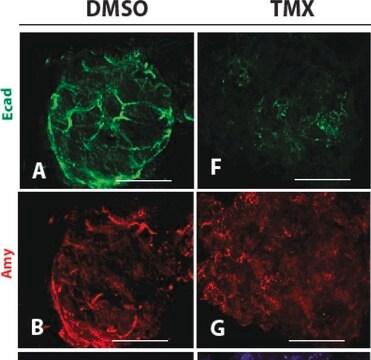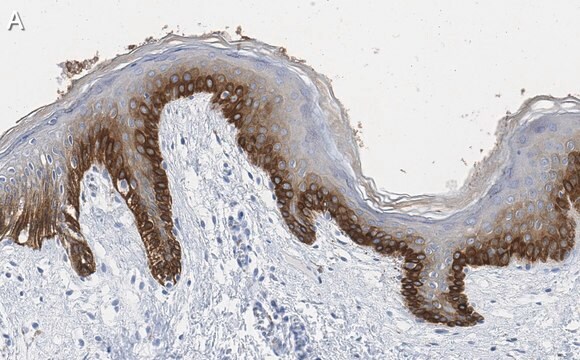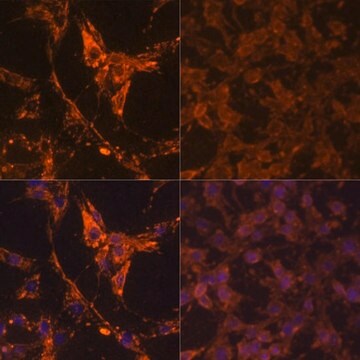WH0000276M4
Monoclonal Anti-AMY1A antibody produced in mouse
clone 2D4, purified immunoglobulin, buffered aqueous solution
Sinônimo(s):
Anti-AMY1, Anti-AMY1B, Anti-amylase, alpha 1A; salivary
About This Item
Produtos recomendados
fonte biológica
mouse
Nível de qualidade
forma do anticorpo
purified immunoglobulin
tipo de produto de anticorpo
primary antibodies
clone
2D4, monoclonal
forma
buffered aqueous solution
reatividade de espécies
human
técnica(s)
ELISA: suitable
immunohistochemistry (formalin-fixed, paraffin-embedded sections): suitable
western blot: suitable
nº de adesão GenBank
Condições de expedição
dry ice
temperatura de armazenamento
−20°C
modificação pós-traducional do alvo
unmodified
Informações sobre genes
human ... AMY1A(276)
Descrição geral
Imunogênio
Sequence
VRDCRLSGLLDLALGKDYVRSKIAEYMNHLIDIGVAGFRIDASKHMWPGDIKAILDKLHNLNSNWFPEGSKPFI
Características e benefícios
forma física
Informações legais
Exoneração de responsabilidade
Não está encontrando o produto certo?
Experimente o nosso Ferramenta de seleção de produtos.
Código de classe de armazenamento
10 - Combustible liquids
Ponto de fulgor (°F)
Not applicable
Ponto de fulgor (°C)
Not applicable
Equipamento de proteção individual
Eyeshields, Gloves, multi-purpose combination respirator cartridge (US)
Certificados de análise (COA)
Busque Certificados de análise (COA) digitando o Número do Lote do produto. Os números de lote e remessa podem ser encontrados no rótulo de um produto após a palavra “Lot” ou “Batch”.
Já possui este produto?
Encontre a documentação dos produtos que você adquiriu recentemente na biblioteca de documentos.
Nossa equipe de cientistas tem experiência em todas as áreas de pesquisa, incluindo Life Sciences, ciência de materiais, síntese química, cromatografia, química analítica e muitas outras.
Entre em contato com a assistência técnica








